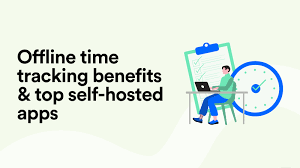Not every shift happens within perfect Wi-Fi. Warehouses, basements, remote sites, and moving crews all share a common problem: unreliable connectivity. If your attendance data depends on a stable signal, you get lines at kiosks, missed punches, and a Friday pile of manual fixes. An offline-first cloud workforce management system captures work in the moment and syncs cleanly later—so payroll stays accurate and managers keep moving.
Why Offline-First Matters
Accuracy at the edge
When the network drops, people still need to clock in. Offline-capable apps queue punches locally (device storage) and timestamp them with verifiable metadata. No more “we’ll add it later” and the disputes that follow.
Operational continuity
Queues at a wall clock or a single kiosk create bottlenecks. If any one device fails, the flow fails. Mobile, offline-first punching distributes the risk across devices and lets crews clock in where work begins—dock, job site, backroom.
Cleaner payroll and fewer exceptions
Store-and-forward syncing means timesheets fill themselves as soon as a signal returns. Managers approve exceptions the same day instead of reconstructing a week from memory.
How Offline Time Tracking Works
Store now, sync later
Each clock event (in/out, break start/end) is captured locally with user, time, location intent, and device ID. When connectivity resumes, events sync to the server with conflict checks (duplicates, out-of-bounds) and an audit trail.
Geofencing with tolerance
For on-site roles, geofences validate that a punch happened at the right place. Offline-first apps apply cached geofence rules and re-validate on sync, flagging outliers for review.
Unified hub for managers
Schedules, attendance, approvals, and exports should live in one place. Consolidating this flow in a cloud workforce management hub keeps the trail unbroken from plan → punch → approval → payroll.
30-Day Rollout Plan
Week 1 — Audit and policy
- List sites with poor connectivity and the teams affected (field, warehouse, overnight).
- Write simple rules: who can clock mobile, where geofences apply, how missed punches are corrected.
- Capture pay rules (OT thresholds, breaks/meal) so exceptions can be detected automatically.
Week 2 — Pilot on real crews
- Enable mobile/tablet clock-ins for 1–2 crews, set geofences for on-site roles, and distribute a one-pager: how to clock, how to request a fix.
- Train supervisors on same-day exception handling (missed punch, early/late, out-of-bounds).
- Keep any legacy punch clock read-only as a safety net; do not edit it.
Week 3 — Scale and governance
- Clone the pilot setup to more locations; appoint a power user per site.
- Define publishing cadence, change-freeze windows, and who approves corrections by when.
- Start a tiny scorecard: on-time punches, exceptions resolved same day, overtime prevented.
Week 4 — Measure and improve
- Compare scheduled vs worked hours; tighten templates and location rules.
- Share early wins (overtime down X%, payroll edits down Y%) and expand to remaining teams.
Tooling Criteria Checklist
- Offline capture with automatic store-and-forward syncing.
- Geofenced clock-ins (with caching) and post-sync re-validation.
- Real-time exceptions when connected; queued alerts when offline.
- Supervisor approvals in-app with an audit trail of who changed what and when.
- Timesheets aligned to pay periods and export-ready for payroll.
- Works on iOS/Android and as a shared tablet kiosk; handles spotty networks gracefully.
- Clear roles/permissions and multi-location support.
Reporting That Payroll Trusts
Make evidence boring (and reliable)
Managers need coverage and cost; finance needs proof. Establish a weekly rhythm for scheduled-vs-actual, overtime, and exception aging. Keep event-level logs accessible for audits. For deeper drill-downs and trend views, lean on platform time tracking capabilities without dumping CSVs into spreadsheets.
Common Pitfalls and Fixes
Editing in two places
Fix: make your old spreadsheet or kiosk system read-only during rollout. All live changes happen in the WFM hub.
Loose geofences
Fix: calibrate radii per site; allow a small tolerance for indoor GPS drift and flag outliers for review instead of blocking work.
Exception backlog
Fix: same-day reconciliation. A 15-minute daily habit beats a Friday scramble and keeps payroll clean.
Bottom Line
Offline-first attendance meets work where it happens and removes single points of failure. With store-and-forward clock-ins, geofence validation, and audit-ready timesheets, frontline teams move faster and payroll closes cleaner. Centralize scheduling, attendance, and approvals in a single hub, anchor the process, and let connectivity be a bonus—not a dependency.




